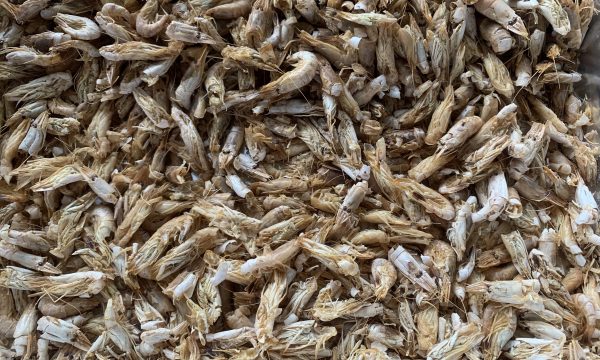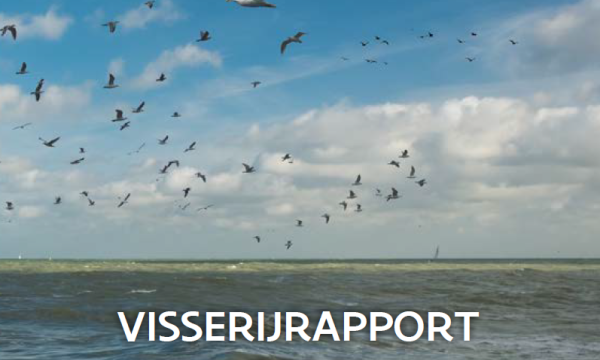Press release Land-based aquaculture of brown shrimp getting closer?

Progress on shrimp aquaculture has been made through doctoral research. For the first time, researchers have succeeded in successfully cultivating baby shrimp into juvelines. Important steps have also been taken in the control and identification of the most important disease creators (viruses) of the native grey shrimp.
Large, living brown shrimp offer many culinary perspectives, but they are scarce and it takes (too) much time and effort to catch them in the wild and bring them ashore. Aquaculture of brown shrimp, certainly of the larger calibers (+7cm), offers commercial prospects over time, but only if the technical obstacles can be overcome,' says ILVO-UGent researcher Benigna Van Eynde.
On Wednesday, December 4, 2019, Benigna Van Eynde defended her PhD thesis "Development of breeding techniques for the intensive cultivation of Crangon crangon and discovery of brown shrimp viroid". Promotors are Prof. Dr. Guy Smagghe and Dr. Olivier Christiaens of UGent and ir. Daan Delbare of ILVO.
Baby shrimps like a strong current, a gentle temperature and veggies in their diet.
It's not the first time researchers have tried to close the life cycle of shrimp in captivity. With a series of breeding installation and lab experiments, Benigna Van Eynde was successful: 'We now know how to grow larvae into juveniles with a 70-80 % survival rate after 21 days. That's high. The optimal housing, flow, temperature and nutrition for both the swimming larvae and the juvenile shrimp burrowing into the sand have been fine-tuned'. The final protocol differs from that for other crustaceans. The transition from larva to juvenile, after 21 to 28 days, was always a critical point. The larvae stay alive most of the time if you place them in a closed system, without a constant change of water and with a strong current. Other crustaceans usually use cylindrical tanks at 15°C, which are tapered at the bottom (cylindroconical shape), where a soft flow overflow is provided. In terms of temperature, the shrimp already grew better at 18°C (end of the larval period after 23 days), and even faster at 21°C (end of the larval period after 18 days), but then survival declined slightly.
A mixed diet of Artemia nauplii (first stage brine shrimp) and micro-algae gave the best survival rate: 55% survival after 28 days. Exactly how the micro-algae lead to better survival is still unknown. In terms of quantity of feed, a restrictive food regime (i.e. not ad libitum) gives the best result in terms of survival, and also for water quality (food surpluses cloud the water), and for cost price (nauplii are expensive) it is optimal.
Shrimp, the cannibal
In the experimental breeding programme, the survival of the larvae dropped severely between days 21 and 28, probably due to cannibalism. This tendency to eat conspecifics is partly controllable if you provide sand in the containers: the young shrimps can then dig themselves in and are less vulnerable. The density of shrimp per breeding tank does not influence the degree of cannibalism. At any density, the percentage of eaten larvae was the same. Further research on the triggers and the avoidance strategies for cannibalism are needed.
External enemies: shrimp viruses
In the breeding of other shrimp species (e.g. tiger shrimp) viruses are the most important causes of disease. The wild shrimp is also sometimes infected by the Crangon crangon bacilliform virus (CvBV). CvBC is a virus that affects the digestive system and therefore affects the growth of the shrimp, but is not dangerous for humans. Because sustainable aquaculture stands or falls with the availability of a virus control plan, this PhD research focused on shrimp viruses present in farmed and wild caught shrimp. Benigna Van Eynde used a PCR based detection method. Nearly 80% of the North Sea shrimp studied appears to be infected with CcBV. And that's a problem, because crustaceans have a congenital, but not an adaptive, immune system. In aquaculture, RNA interference, a type of vaccine that blocks further replication of the virus, can be used'.
Benigna Van Eynde conducted experiments with the CcBV and RNA interference targeting the viral gene helicase. A small effect was observed: the number of viral particles decreased by almost a factor of 2 after 15 days. This is promising, but further research into this treatment method is certainly needed. Moreover, CcBV is not the only virus. "In the research based on Next Generation Sequencing - carried out for the first time on shrimp - we described no less than 16 new shrimp viruses. These must also be screened for their possible impact in breeding conditions".
Land-based shrimp farming no longer a distant dream
"The cultivation of brown shrimp as a niche product comes a lot closer with this research. A big hurdle, the establishment of an efficient larval culture, has been overcome," says Van Eynde. In recent years, there has been an increasing demand for large, live brown shrimp, to be processed either fresh or even raw into high-quality culinary products (sashimi, steaming, grilling, marinating, baking...). For such niche applications, there is a surcharge of around 30%. "This opens up perspectives, but also raises questions. The largest brown shrimp (larger than 7 centimeters) from the North Sea are barely 2% of the catch. Landing shrimp alive from the wild catch is limited to the last tow of the day, and manual sorting is labor-intensive and therefore economically unprofitable".
"Additional research is of course needed: into suppressing cannibalism in young and adult shrimp, into optimal living conditions for the larger animals, into diseases, and into building up a good brood stock through a good selection of parent animals. The high infection rate of CcBV in the North Sea is a problem there, but a first analysis we did with a number of animals from the Black Sea suggests that the infection rate is much lower there. It is possible that we will be able to build up an uninfected stock of parent animals".


